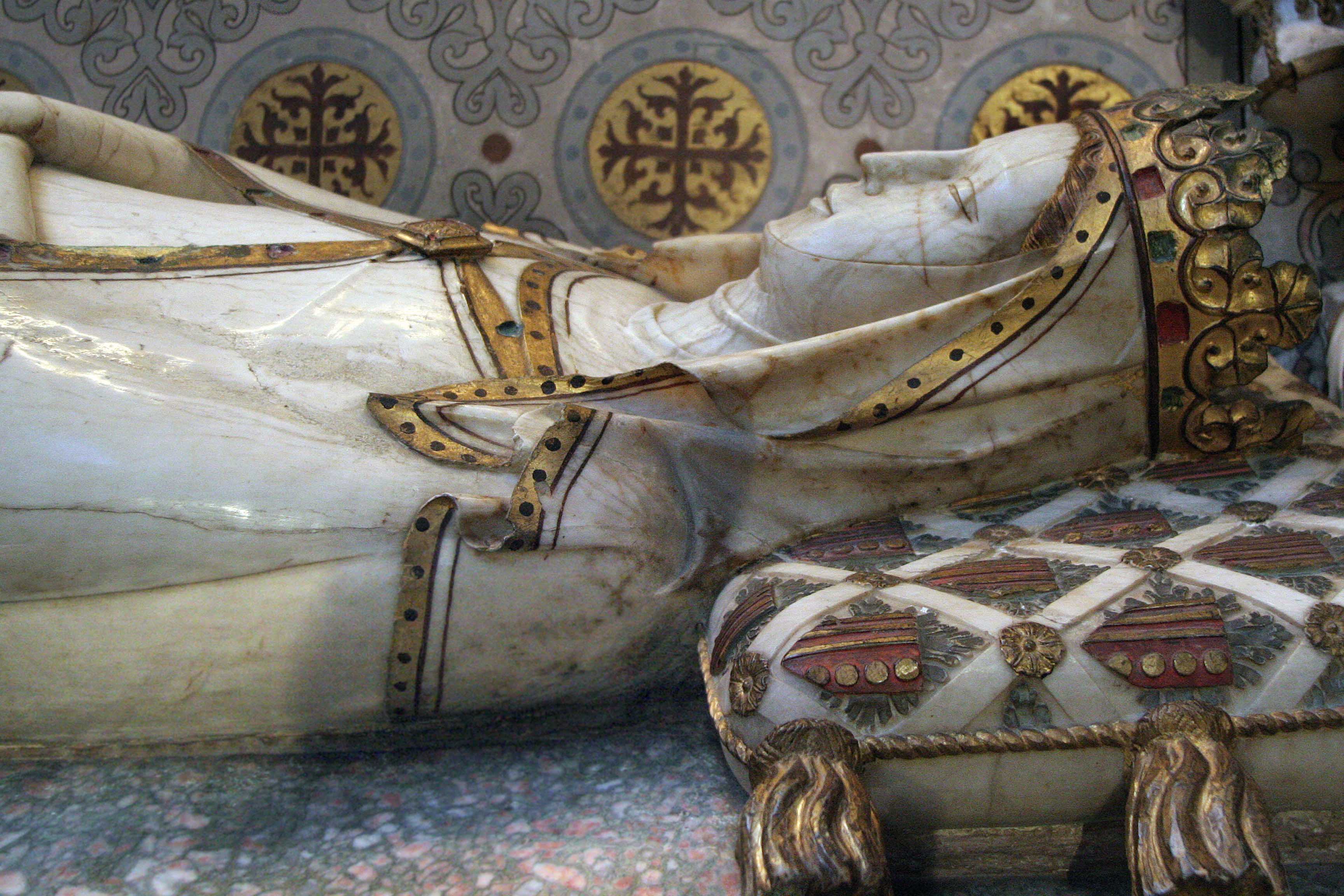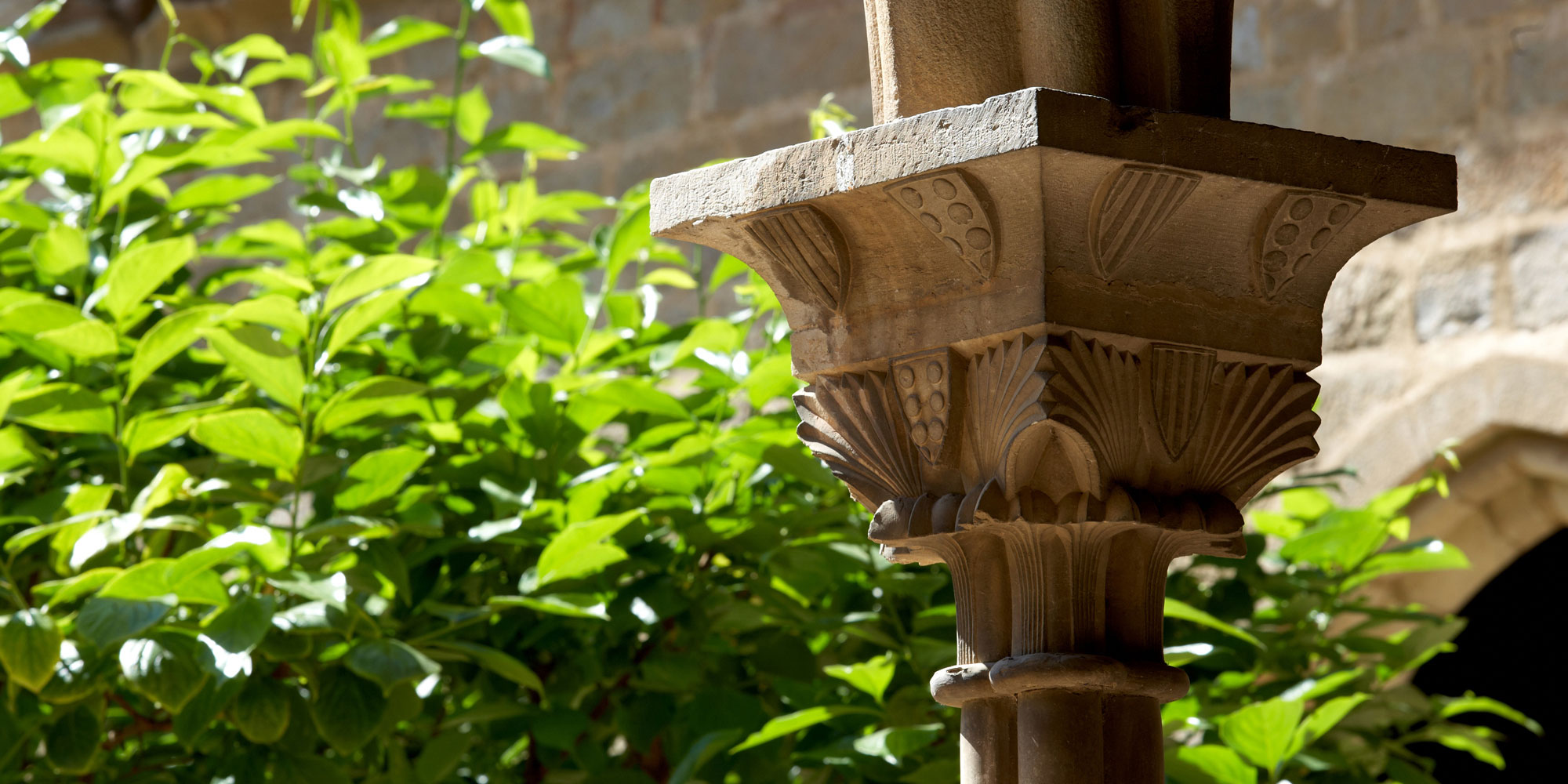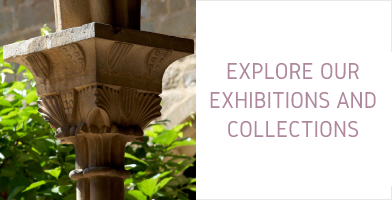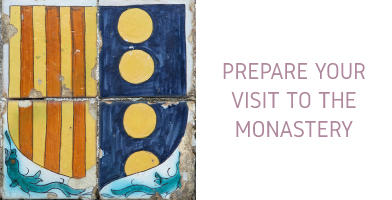The 14th century: the foundation of the monastery
The Monastery of Pedralbes was founded by Queen Elisenda de Montcada in 1327 with the support of her husband, King James II, who wanted to dedicate the church to the Virgin Mary. With the foundation of the monastery, Elisenda, who was deeply religious, hoped to redeem her sins and those of her family. The Pedralbes estate, in the old district of Sarrià, was chosen by the Queen for the construction of the monastery. The name of Pedralbes first appears in 986 and comes from the Latin toponym Petras Albas, referring to the white stone from the nearby quarry at the foot of Sant Pere Màrtir, the hill where it was located. The site was ideal because it was close to the city and court of Barcelona but isolated from its hustle and bustle.
During the construction of the monastery, which was built on three successive levels, its architects took advantage of the gentle slope of the hillside, the natural terracing of the terrain and some of the buildings on the above-mentioned Pedralbes estate. Consequently, the dormitory was located at the top, the church on the middle level, on the threshold between the material and the spiritual worlds, and the allotments on the lower level. In addition, Elisenda, given the king’s delicate health, had a modest palace built next to the monastery to retire to with the women of her family, once she became a widow.

On 1 February 1325, Pope John XXII signed the bull granting permission to build the monastery, and on 26 March 1326 the monarch laid the first stone of the church apse, consecrated on 3 May 1327 in a solemn ceremony. After the ceremony, the first religious community entered the monastery, consisting of 14 nuns and 15 novices from the Poor Clare Order of the Convent of SaintAnthony in Barcelona, under the rule of the Abbess Sobirana Olzet. Although the monastery was already habitable, it still lacked some rooms that would be added on over the years.
In 1328, shortly after the death of James II, Elisenda moved from the Royal Palace in Barcelona to the palace that she had had built in Pedralbes and remained there until her death in 1364. In her will, Elisenda ordered that the palace should be demolished once she died. Despite her retirement, the queen, in her position as a councillor, did not stand on the sidelines of the political life of the realm, nor the life of the Poor Clare community itself, on whose behalf she issued four ordinances and to whom she left most of her possessions. In its early days the monastery was governed by the most important lines of the Catalan nobility and the bourgeoisie, such as the Montcada, the Pinós, the Cardona, the Cruïlles, the Centelles, the March, the Castellet and the Bastida families.
Thanks to the donations and the legacy that the queen left in her will, the exemption from payment of certain parish and diocesan taxes, and also the protection of the royal family and the Council of One Hundred, the governing body of Barcelona, as of 1357 the monastery achieved economic independence and a role of special importance within the Catholic Church. The monastery would accumulate important assets all over Catalonia, giving it notable political and social power during its long history.
- Presentation 1
-
History
2
-
The Space
3










